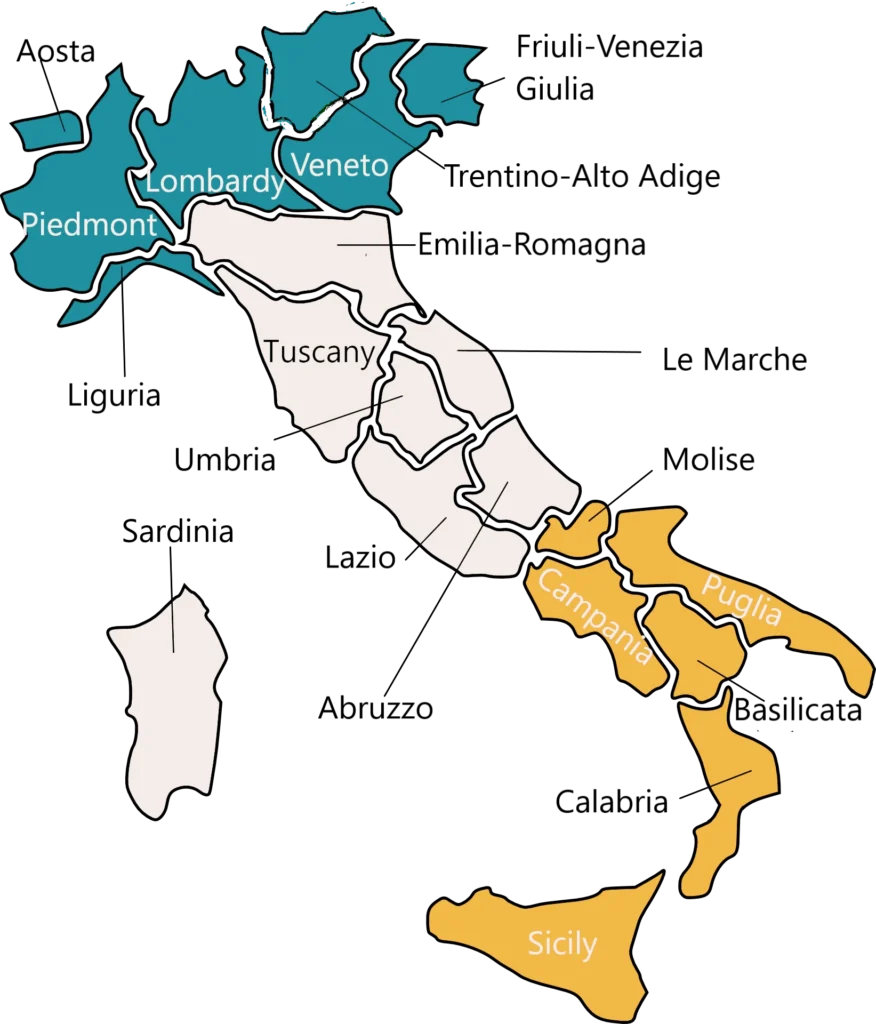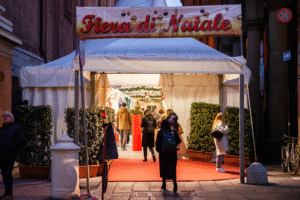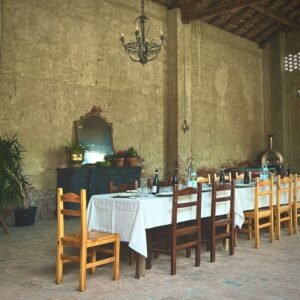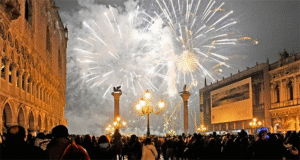Montepulciano is a captivating medieval town in Tuscany that sits atop a limestone ridge, offering stunning views of the surrounding countryside. Famous for its exquisite wines and rich history, this enchanting destination attracts wine enthusiasts and history buffs. I have visited it twice, and it’s always a great time.
Montepulciano’s allure goes beyond its beautiful scenery and ancient streets; it’s the birthplace of some of Italy’s most renowned wines. This article will explore Montepulciano’s vibrant wine culture, highlight its famous vintages, and offer tips for visiting local wineries, giving you a taste of this Tuscan gem’s viticultural heritage.
This post contains affiliates
👉🏼 Book Wine Tours
👉🏼Find Amazing hotels
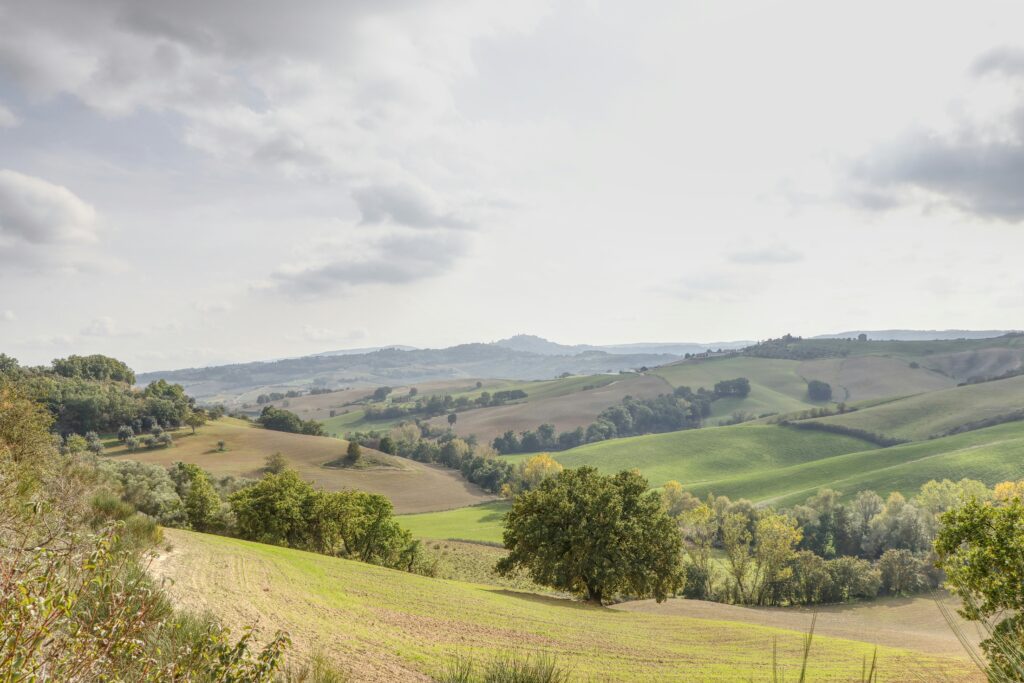
What Wine Is Montepulciano Known For?
Montepulciano is renowned for its production of the esteemed Vino Nobile di Montepulciano. This exceptional red wine is primarily made from the Sangiovese grape, known locally as Prugnolo Gentile. The name of the wine, which translates to “The Noble Wine of Montepulciano,” reflects its historic prestige as a wine suitable for nobility.
Vino Nobile di Montepulciano has rightfully earned its place among Italy’s finest wines. It boasts a DOCG (Denomination of Controlled and Guaranteed Origin) status, the highest classification for Italian wines.
The wine is aged for a minimum of two years, often in oak barrels, giving it a complex character with dark cherry, plum, leather, and spice notes. It embodies the essence of Tuscany’s terroir, offering a rich and full-bodied experience with well-balanced acidity and tannins.
For those who appreciate the finer things in life, a glass of Vino Nobile di Montepulciano is a true taste of Italian elegance.
How to Get to Montepulciano?
Montepulciano is easily accessible from several major cities in Italy. The nearest airports are located in Florence and Rome, both of which are approximately a 2-hour drive away. If you prefer public transportation, you can take a train to Chiusi-Chianciano Terme, the closest train station to Montepulciano, which is about 30 minutes away by bus or taxi.
Additionally, there are buses that run directly from Siena and Florence to Montepulciano. If you choose to drive, renting a car is an option, and you can enjoy a scenic drive through the Tuscan countryside from Florence or Rome.
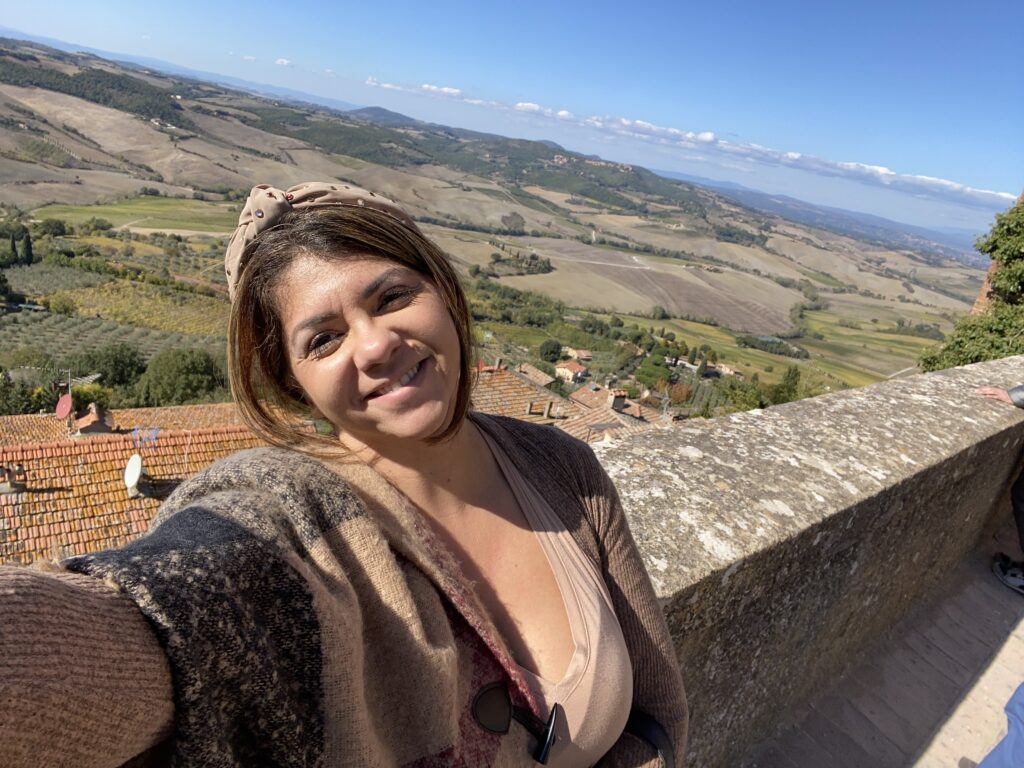
Best Time of Year to Visit Montepulciano Wineries
The best time to visit Montepulciano wineries is during the spring (April to June) and fall(September to October). During these months, you can enjoy pleasant weather, fewer tourists, and the opportunity to see the vineyards in full bloom or during the harvest season. The harvesttime, which takes place in late September to October, is particularly special, as the vineyards are bustling with activity, and many wineries offer special tours and tastings.
Best Montepulciano Wineries
Montepulciano is famous for its exceptional wineries and world-class wines, especially the renowned Vino Nobile di Montepulciano. Here are some of the top wineries to visit in Montepulciano:
Cantina de’ Ricci
Cantina de’ Ricci, dating back to 1150, boasts spectacular underground areas and offers fantastic tours. It is one of the region’s oldest and most famous wine cellars, known for its stunning Renaissance architecture and deep historical roots that date back to the 16th century.
Location and History
The Cantina de’ Ricci is located in the heart of Montepulciano, underneath the grand Palazzo Ricci, a Renaissance palace that serves as a prominent architectural landmark. The winery’s cellars are among the oldest and most impressive in Montepulciano, carved deep into the tuff rock beneath the palace.
Constructed in the 16th century by the Ricci family, one of Montepulciano’s most distinguished noble families, these cellars bear witness to the family’s deep involvement in the region’s winemaking traditions.
The Cellars
Due to their grandeur and monumental architecture, the cellars of Cantina de’ Ricci are often described as a “cathedral of wine.” Visitors are struck by the soaring vaulted ceilings, massive stone columns, and sheer scale of the underground space, which creates a dramatic and awe-inspiring atmosphere. These cellars have been carefully preserved over the centuries, maintaining their historical integrity while serving as a functional space for aging wines.
Wine Production
Cantina de’ Ricci is famous for producing Vino Nobile di Montepulciano, one of Tuscany’s most prestigious wines. The winery is dedicated to making high-quality wines that showcase Montepulciano’s unique terroir. Their Vino Nobile is mainly made from the Sangiovese grape, locally known as Prugnolo Gentile, blended with small amounts of other traditional Tuscan grape varieties like Canaiolo and Mammolo.
The wines are aged in large oak casks in historic cellars, where the cool, stable temperatures and high humidity create ideal conditions for the slow, graceful aging of the wine. In addition to Vino Nobile di Montepulciano, Cantina de’ Ricci also produces Rosso di Montepulciano, a younger and more accessible red wine, and other traditional Tuscan wines.
Wine Tasting and Tours
Cantina de’ Ricci offers an unforgettable wine-tasting experience, allowing visitors to sample their acclaimed wines in the extraordinary setting of the ancient cellars. The guided tours provide insight into the Ricci family’s history, the cellars’ architectural significance, and the winemaking process. The winery also offers tastings paired with local Tuscan delicacies, enhancing the overall experience.
Cultural Significance
Cantina de’ Ricci is more than just a winery; it is Montepulciano’s cultural and historical gem. The cellars are renowned as one of the most beautiful and historically significant sites in the region, attracting wine enthusiasts and history and architecture lovers. Preserving these cellars ensures that Montepulciano’s rich winemaking heritage continues to be cherished and passed down to future generations.
Recognition
Cantina de’ Ricci’s wines have earned praise and recognition for their quality and authenticity, reflecting the deep-rooted traditions of Montepulciano. Their Vino Nobile di Montepulciano is particularly esteemed, known for its rich flavors, elegant structure, and potential for aging.
Cantine Contucci
Cantine Contucci is one of the oldest and most prestigious wineries in Montepulciano, Tuscany, with a history of nearly 1,000 years. The Contucci family has been involved in winemaking since the Renaissance, making them one of the founding families of the Vino Nobile di Montepulciano, one of Italy’s most celebrated wines.

Location and History
Cantine Contucci is located in the historic center of Montepulciano, adjacent to the famous Piazza Grande, the town’s main square. The Contucci Palace, where the winery is housed, is an architectural gem boasting Renaissance features and a deep connection to the town’s history and culture. The family’s involvement in winemaking dates back to at least the 11th century, and the Contucci family has played a significant role in the development and recognition of Vino Nobile di Montepulciano.
The Contucci Cellars
The Cantine Contucci cellars are a remarkable part of the estate, winding beneath the historic palace. These ancient cellars have been used for centuries to age the estate’s wines, and they still house large oak barrels where the Vino Nobile matures.
The cellars are a living testament to the Contucci family’s long-standing winemaking traditions and provide an atmospheric backdrop for the aging process, which is crucial to the character and quality of their wines.
Wine Production
Cantine Contucci is best known for its Vino Nobile di Montepulciano, a wine that is deeply rooted in the terroir of Montepulciano and the expertise of the Contucci family. The winery produces several variations of Vino Nobile, including a Riserva that is aged for a longer period to develop even greater complexity and depth.
In addition to Vino Nobile, the estate produces Rosso di Montepulciano, a younger and fruitier wine, as well as other traditional Tuscan wines like Bianco della Contessa, which is a white wine blend, and Vin Santo, a classic Tuscan dessert wine.
The wines are made primarily from Sangiovese (Prugnolo Gentile), with small amounts of other local grape varieties like Canaiolo and Mammolo, which add nuance to the blends.
Wine Tasting and Tours
Visitors to Cantine Contucci can enjoy guided tours of the historic cellars, learning about the family’s winemaking heritage and the intricate process behind their celebrated wines.
The winery offers tastings of their various wines, often accompanied by local Tuscan delicacies. The tasting experience is enriched by the setting in the ancient cellars and the opportunity to learn directly from members of the Contucci family, who are often involved in hosting guests.
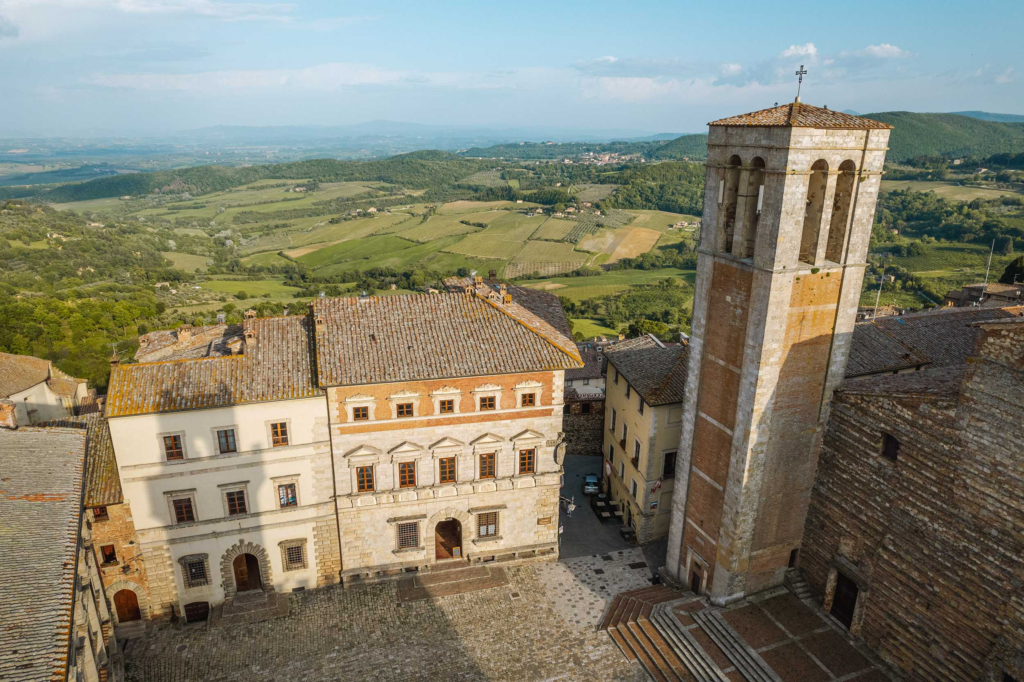
Cultural and Historical Significance
Cantine Contucci is not just a winery; it is a cornerstone of Montepulciano’s cultural and historical identity. The Contucci family has been instrumental in the town’s development over the centuries, and their continued dedication to winemaking helps preserve Montepulciano’s rich heritage.
The Contucci Palace is a symbol of this legacy, with its Renaissance architecture and art adding to the winery’s allure.
Recognition
The wines of Cantine Contucci have been highly regarded for centuries, receiving numerous accolades for their quality and authenticity. The Vino Nobile di Montepulciano from Cantine Contucci is remarkably esteemed, known for its elegance, complexity, and ability to age gracefully.
The winery’s commitment to traditional winemaking methods and a deep respect for the land continue to make their wines some of the best examples of Tuscan viticulture.
Gattavecchi
Located conveniently near the town center, Gattavecchi is praised for its wine quality and dining experience. The Gattavecchi family has been involved in winemaking for generations, and their estate combines the rich history of the region with a dedication to quality and authenticity.
Location and History
The Gattavecchi winery is located in the former convent, the ancient Monastery of Santa Maria dei Servi, which dates back to the 12th century. This historic setting, just outside the town walls of Montepulciano, provides a unique and atmospheric backdrop for the winery.
The Gattavecchi family has been producing wine in Montepulciano for over a century, and their deep connection to the region is reflected in their commitment to traditional winemaking practices.
The Cellars
The cellars of Gattavecchi are located beneath the ancient monastery, where the cool, stable environment provides ideal conditions for aging wine. These historic cellars, with their vaulted ceilings and thick stone walls, are integral to the production process, particularly for their Vino Nobile di Montepulciano, which is aged in large oak barrels to achieve its distinctive character.
Wine Production
Gattavecchi is best known for its Vino Nobile di Montepulciano, a wine representing Tuscan winemaking’s pinnacle. The winery uses primarily Sangiovese (Prugnolo Gentile) grapes, along with small amounts of other traditional varieties such as Canaiolo and Colorino. Its wines are crafted to express the unique terroir of Montepulciano, combining traditional methods with careful attention to detail.
In addition to Vino Nobile di Montepulciano, Gattavecchi produces a range of other wines, including Rosso di Montepulciano, a fresher and more approachable red wine, and Chianti Colli Senesi, made from grapes grown in the Chianti subregion near Montepulciano. They also produce Vin Santo, a classic Tuscan dessert wine, using the ancient method of air-drying grapes before fermentation.
Wine Tasting and Culinary Experience
Gattavecchi offers a comprehensive wine-tasting experience, often paired with traditional Tuscan cuisine. The winery’s on-site restaurant, “Osteria Gattavecchi,” is a popular destination for visitors who enjoy authentic Tuscan dishes made from local ingredients. The restaurant is housed in the former monastery, providing a rustic yet elegant setting where guests can savor Gattavecchi wines alongside delicious regional specialties.
The wine-tasting experience at Gattavecchi often includes a tour of the historic cellars, where visitors can learn about the winemaking process and the history of the estate. The tastings are typically guided by members of the Gattavecchi family, who share their knowledge and passion for their wines.
Cultural and Historical Significance
The Gattavecchi winery is more than just a producer of fine wines; it is a guardian of Montepulciano’s cultural heritage. The conversion of the ancient monastery into a winery has preserved an important piece of the region’s history, and the Gattavecchi family’s ongoing dedication to traditional winemaking helps maintain the legacy of Vino Nobile di Montepulciano. Book Wine Tour.
Recognition
Gattavecchi’s wines are well-known for their quality and authenticity, and have earned a loyal following among wine enthusiasts and connoisseurs. Among their wines, the Vino Nobile di Montepulciano is particularly esteemed for its balance, depth, and expression of the Montepulciano terroir.
The Gattavecchi family’s dedication to preserving traditional methods while embracing innovation ensures that their wines continue to be among the best in the region.
div data-gyg-widget=”auto” data-gyg-partner-id=”VEMHNYB”>



